How to Start Advertising on TikTok: A Brand’s Guide for 2023
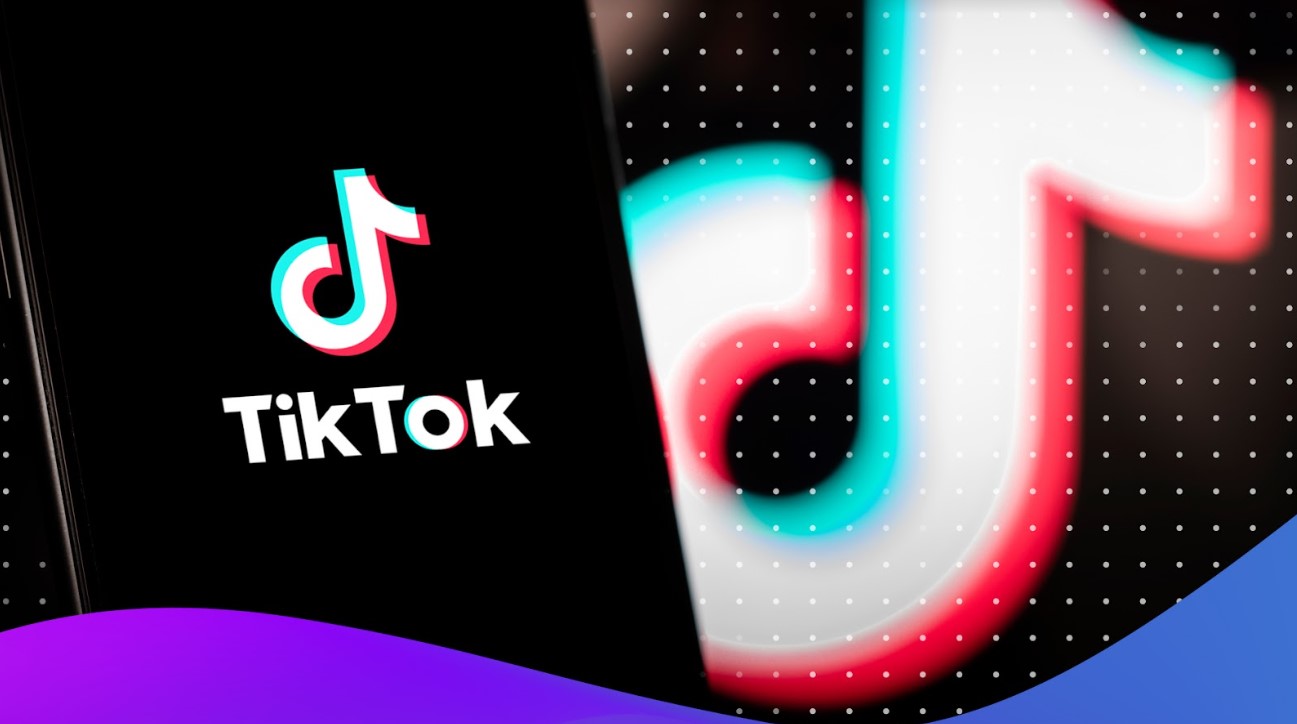
If you’ve been caught up in a goofy dance challenge, know what a negroni sbagliato is, or recently rediscovered your love for corn, you probably have TikTok to thank (or blame?) for it. Despite proposed and actual restrictions in the US, TikTok was the most downloaded app in the world last year and has woven itself into the very center of pop culture.
Contrary to its early reputation as the former Musical.ly and the spiritual heir to Vine, TikTok isn’t just for teens. Its 1 billion monthly active users span all demographics, with 35-64-year-olds among the fastest-growing age groups (though Gen Z is still dominant on the platform). This makes it a vital advertising marketplace for companies across industries and sectors. And as the first US Independent Agency to receive the TikTok Campaign Management Agency Partner badge, Tinuiti knows a thing or two about how to help brands create engaging and successful TikTok advertising and marketing campaigns.
Here’s a look at how to advertise on TikTok, some of the platform’s key features and best practices, and how you can get started with TikTok ads.
“TikTok is the #1 downloaded platform across mobile. It’s no longer the best-kept secret for advertisers, but the platform is spreading its wings against wider demographics, and we expect this to continue.”
– Avi Ben-Zvi, VP of Social at Tinuiti

TikTok is a channel designed for short-form video content. Users can choose from thousands of audio clips and record videos of themselves lip-syncing, dancing, or acting along to the sound bites. Videos can also be edited, sped up, or slowed down, and users can add stickers, activate a special effect, or use filters to change the video’s look. When you log in, a recommended video on your For You Page (FYP) will start playing right away, as determined by the TikTok algorithm.
You can also follow other users to stay up to date on their content or use the search function to look up specific challenges, keywords, hashtags, and more. There’s also a trending area to find up-and-coming videos.
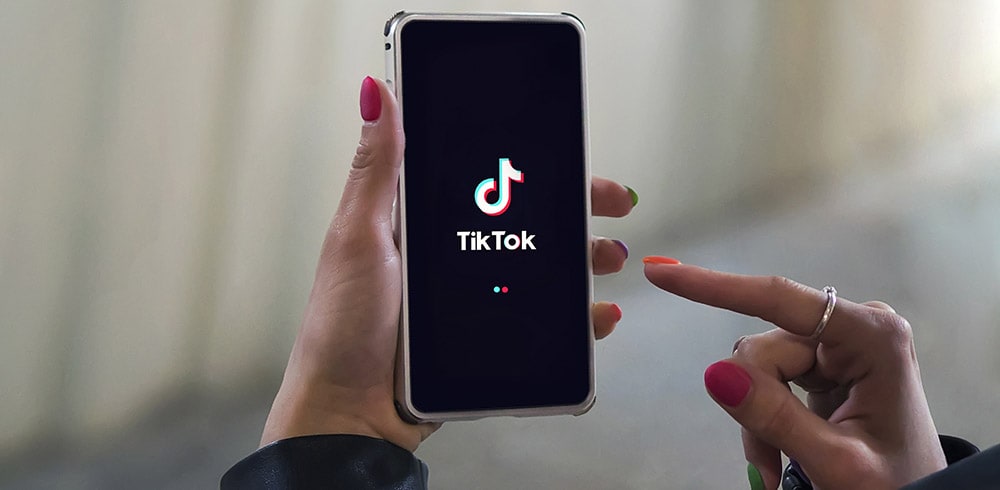
The TikTok app isn’t just for individual users, though. Companies use TikTok ads to boost their brand awareness, promote new products or sell directly to TikTok users. But to advertise on TikTok effectively, brands must understand the platform’s audience, ad formats and the process of creating a TikTok ad that will resonate.
“What I love most about working on this platform is how advertisers are rewarded for enhancing the user experience rather than disrupting it. We see much stronger engagement and touchpoints to purchases when we embrace TikTok trends and the native content experience that the consumer leads,” said Haley Kimmen, Senior Specialist, Paid Social at Tinuiti.
TikTok, in some version or another, is currently available in 150 markets worldwide and 75 unique languages. Its most popular posters have millions of followers and billions of views per month.
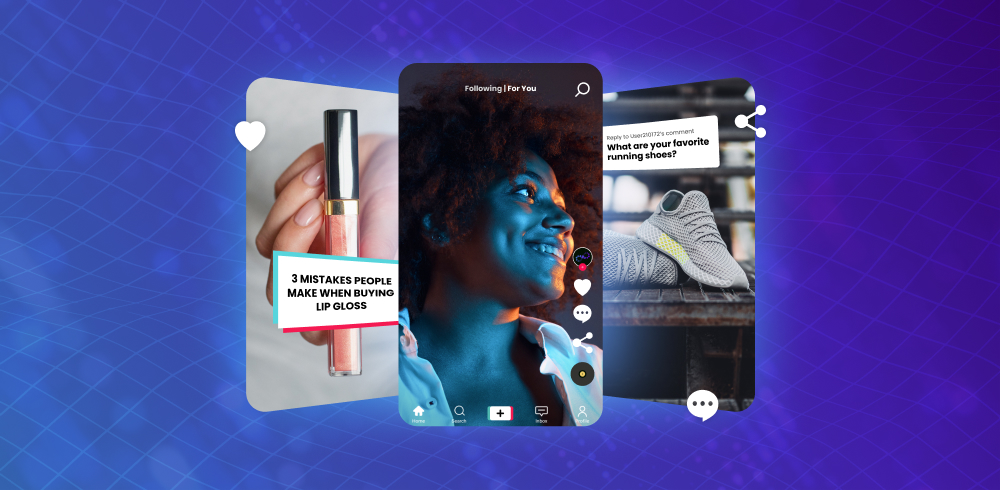
TikTok has become popular with all age groups. Though teens were the original cohort to catch on, TikTok videos are now a part of the mainstream social media diet for people worldwide, including 138 million Americans from all walks of life.
TikTok has extraordinary potential to reach young people while they’re highly engaged. We’ll let these statistics speak for themselves:
Given that reach and impact, it’s hard to think of a brand for which TikTok’s audience isn’t a good fit. To borrow a phrase popular on the app, TikTok can offer a huge W for marketers if their content aligns with what users are looking for.
Today, TikTok offers a variety of robust ad types ranging from simple in-feed ads to complex video shopping ads. Let’s dive into how each type of ad works and what your brand may need to get started.
As the name suggests, in-feed ads appear in the feed as part of the FYP video queue and redirect to your website or app. Each in-feed ad video can be 5 to 60 seconds long, and a profile photo, brand name, and text description accompany each video. Users can also interact with these ads, liking or sharing them or leaving comments. Each in-stream video ad can use one of three available action models: CPC (cost per click), CPM (cost per mille), and CPV (cost per view). To count for CPV, a user has to watch your ad for more than 6 seconds.
Spark Ads enable brands to leverage existing organic videos that align with their campaign aims by amplifying them. Spark Ads use posts from real TikTok accounts (either the brand’s or another creator’s, used with permission), which ensures that all views, comments, shares, likes, and follows gained from boosting the video during the promotion are attributed to the organic posts.
In 2022, TikTok began testing search ads or sponsored in-feed or spark ads that appear in the first few search page results. This allows brands to toggle on search placements for existing campaigns, helping them target users with high interest or purchase intent. However, this placement isn’t available to the general public yet. For now, you’ll need to work with one of TikTok’s marketing partners (like Tinuiti!) to run these ads.
A brand takeover is when your ad appears immediately after a user opens the app, “taking over” the opening screen. Once opened, the brand can bring users somewhere else, whether it’s a TikTok profile or an external site.
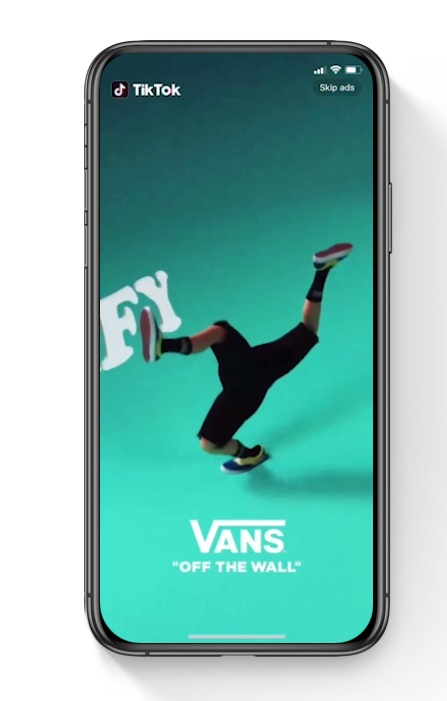
Source: TikTok
This TikTok ad type has a high barrier to entry, as it’s more expensive than in-feed or spark ads, and the fact that only one advertiser can leverage this ad per day.
Similar to Brand Takeover, this ad appears when the app is opened. However, TopView allows videos such as In-Feed Video to be used as advertising material.
TikTok’s user-generated content is unique, clever, and remarkably shareable, and the Hashtag Challenge ad format takes full advantage of this. Users are asked to participate in a challenge campaign that will last for six days, where they post their own videos based on the suggested theme. This is an easy way to make your brand go viral if you leverage your ad creative correctly.
TikTok also offers a subset of the Hashtag Challenge called Hashtag Challenge Plus, which allows users to shop for products featured in a Hashtag Challenge without leaving the app. This will help your Hashtag Challenge generate sales and brand awareness at the same time.
“TikTok hashtag challenges leverage a user’s tendency to create and share content around unified themes. Brands can build affinity by turning users into co-creators. TikTok understands the ripple effect one challenge can have, so incorporating brands elevates the idea even more!”
— Kiana Corpus, Senior Digital Marketing Specialist at Tinuiti

Brands can create sponsored augmented reality effects, filters, lenses or stickers that users are free to use on their own organic content. A product or logo is often incorporated into these effects, meaning your brand will appear on each video, encouraging users to interact. If your branded effects add enough value to user’s posts, you can expect to see your brand featured in troves of user generated content.
In the beginning of 2023, TikTok retired Dynamic Showcase Ads and Collection Ads, and reincorporated them into a new format called Video Shopping Ads. This ad type requires brands to create a catalog within TikTok and populate it with products, allowing users to shop and purchase within the ad itself. This also allows brands to automatically retarget people with products according to their online behaviors.
Getting your audience to post videos of them interacting with your brand or product will go a long way to making your branding goals a reality. You can encourage this through your profile and videos or partner with influencers with a large following that may fit your target audience. Many brands have had success with this through “unboxings” or “hauls,” where a user explains, tries on or demonstrates a variety of items bought from or provided by a single brand.
Just like other platforms, influencer marketing is a powerful tool. As long as there are influencers with a following similar to your target audience, you can partner with them to create content promoting your brand to the right users.
You’ll have to choose the right influencers and communicate effectively for influencer campaigns to be successful. They need to maintain their personal style and be trusted to make content that appears authentic to their followers.
Setting up your TikTok advertising campaign and running TikTok ads is a straightforward process that allows advertisers plenty of options for reaching their desired audience and driving engagement. Here’s a step-by-step guide to setting up a TikTok advertising campaign.
To get started, create a user account through the TikTok for Business website by clicking “create an ad.” Then, submit the following information to TikTok:
After verifying the account and agreeing to TikTok’s terms of service, a TikTok ad campaign can be created.
For some campaigns, brands may benefit from setting up a TikTok pixel on their owned platforms. The pixel is a small piece of code that you place on your website to help you track visitor actions, like page views or purchases, and create audience segments to re-engage previous site visitors or model lookalikes to find new customers. TikTok’s tracking pixel is also key if you’d like to run conversion-focused campaigns.
Once you have an account, you can begin to build a campaign. Choose “Campaign” from the top tab of the TikTok Ad Manager to start the process. Then select “Create,” and provide details regarding your objectives and budget. Let’s take a closer look:
As the first step in the campaign creation process, you’ll be prompted to choose from three objectives: Awareness, Consideration, or Conversion. Awareness will maximize the number of TikTok users who see your ad, helping new brands develop brand awareness. TikTok’s metric for this is Reach. Consideration is better for established brands, as it encourages users to seek more information and cultivates interest in their offerings. TikTok offers five sub-objectives to Consideration, including:
Conversion is designed to help organizations improve sales through their TikTok ads and requires brands to install a tracking pixel on their owned properties. Once a pixel is in place, brands can choose from one of three sub-objectives:
The right objective for your brand will depend on your internal business goals and what your team hopes to gain from advertising on TikTok.
When setting up the budget for an ad campaign, there are three choices: No Limit, Daily budget and Lifetime budget. No Limit is essentially an unlimited ad budget; the Daily and Lifetime budgets are the maximum amounts set to be spent daily or on an entire campaign. If you’d like to target your budget on a more granular level, you can set a Daily or Lifetime budget for specific ad groups, too.
Keep in mind that TikTok ads have a minimum budget requirement depending on the user’s choices. The minimum for both daily and lifetime budgets is 50 USD, but ad groups can run on a daily minimum of 20 USD.
After setting a budget for the campaign, the TikTok Ad Manager guides you through creating ad groups. Each campaign can contain one or more ad groups. Ad groups consist of:
The first set of choices to make is about ad placement. Advertisers can choose to advertise directly on the TikTok app, or place ads on one of TikTok’s affiliated properties. These include BuzzVideo, TopBuzz and Babe, for example. TikTok also offers a feature allowing the app to choose ad placement on its own, running ads where they would likely perform better.
Every campaign and ad group has a particular customer or set of customers in mind, and the app allows the advertiser to target specifically based on specific characteristics. Typical demographic options available include:
Advertisers can also target their audience by what devices they use and their interests. For more specific targeting and retargeting, TikTok allows advertisers to upload the IDs of existing TikTok users from previous engagement through ZIP, CSV, and TXT files.
TikTok also provides advanced targeting options that dynamically optimize target audiences to lower cost or maximize conversions (Automatic targeting), automatically expand the target audience if the selected targets are predicted to be too hard to reach (Targeting expansion) or recommend interests and behaviors to include in the ad group (Targeting recommendations).
The final step before pushing your ad live is to set your campaign’s bidding strategy and optimization goal. Optimization goals are straightforward. You can optimize your campaign for conversions, clicks or reach, and depending on the objective you set when creating your campaign, your optimization setting may be preset by default.
The bidding strategy on TikTok is similar to other social media platforms. Here’s a quick overview:
Whichever bidding strategy you select, you can choose either standard or accelerated delivery. Standard delivery means your ad budget will be spent evenly during the scheduled campaign time. Accelerated means your budget will be spent as quickly as possible, and your ad will be exposed to your target audience in the shortest time frame.
Now for the fun part – creating your ad. First, choose a video or spark ad (or if you’ve selected TikTok’s affiliated regional feeds for placement, image ads are also an option). For video ads, simply add your photos or video, or create a video within the Ads Manager using the variety of video creation tools TikTok makes available. For spark ads, you’ll have to contact the creator whose content you want to leverage, and TikTok has a mechanism for doing that.
TikTok will review each ad to ensure it complies with its guidelines, including the caption or text, images or visual content, audio content and the targeted region and age group. You’ll be prompted to upload or create a thumbnail and to insert any relevant links, and you’ll be able to preview your ad before submitting it for approval. Once approved, your ad will ship according to the schedule and volume dictated by your campaign set-up and budget.
Dedicated ads aren’t the only videos TikTok can amplify for a fee. You can also boost your brand’s existing organic TikTok content to a broader or more relevant audience using TikTok Promote, similar to how you can boost organic content on other social media platforms.
Here’s how to use TikTok Promote:
TikTok Promote can help drive traffic to your website, reach more TikTok users, or accelerate your conversion rate. If your brand is already active on TikTok, the Promote feature is like a shortcut through the ad-building process. You’re using your own content as a Spark ad.
As with all social media advertising strategies, it’s absolutely crucial to test, measure and iterate your TikTok ads to optimize performance. The TikTok Ad Manager provides many tools to help you track key metrics like views, interactions and click-through rates, and the TikTok pixel will help you track off-platform activity. Adjust your content strategy if you’re not seeing the engagement and results you expect.
Because of the bidding and budget process, the cost of any individual TikTok ad or campaign will vary. However, there are minimum budgets at the campaign and ad group levels. For campaigns, the minimum daily budget and lifetime budget are $50. For ad groups, the minimum daily budget is $20.
TikTok offers its own set of recommendations for beginning budget sizes, generally, at least $100 and around 20x what you think the cost per action (a click, conversion or sale) should be. For example, if spending $10 for each additional widget you sell through a TikTok ad is reasonable, then the simplified recommendation would be to budget $200.
TikTok also shares some real-world examples of how much their ads cost specific brands, including:
The most successful ads on TikTok don’t look like ads. The more fun you have making your TikTok ad, the more successful it will be. Forget stuffy corporate branding for a minute. Channel your inner performer, and you’ll have a better chance of connecting with your TikTok audience.
Use commercially licensed tracks to make music an essential part of the storytelling. One of every five ads with the highest view-through rates leverage popular trends, effects, or music. And according to TikTok, 93% of top-performing videos overall use audio.
While audio is what makes TikTok TikTok, the text is important too. Text overlays or captions are considered best practices for multiple reasons. Text can help improve accessibility, allow users with silenced phones to better understand your post, and help every user better internalize your messaging. On top of that, TikTok claims that 40% of auction ads with the highest view-through rate have text overlays or captions.
Just as an attention-grabbing headline will catch a reader’s eye, punchy, to-the-point text on top of your TikTok ad video will immediately alert the user to your intent. Using text overlays for your call to action is the best practice here.
Again from TikTok itself: “… over 63% of all videos with the highest click-through rate (CTR) highlight their key message or product within the first 3 seconds.” So get to the point… and keep it short. Shorter videos – 21 to 34 seconds – are best for boosting conversions.
Users and content creators are the ultimate drivers of TikTok culture and trends. As an advertiser, consider yourself a guest in their home. Before you post, spend some time on TikTok and get a feel for the place. Use the native interface to find the right balance between authentic-looking content that fits in with user-generated content and the look of polished advertising.
While it’s important to mix up your content styles and formats (within reason!) on other platforms, it’s downright critical on TikTok, where repetitive content quickly becomes boring and skippable. Use a variety of scenes, subjects and colors, and update your creative often. TikTok ads with varied scenes see a 40.6% lift in impressions.
Always measure, track and adjust. Use the tools TikTok makes available and conduct your own A/B testing on ads. Don’t be afraid to move on from content if it’s not performing well, and be consistent with your metrics.
Many brands are finding success advertising on TikTok using video ads, spark ads, video shopping, influencer marketing and hashtag challenges. Let’s take a look at a few examples:
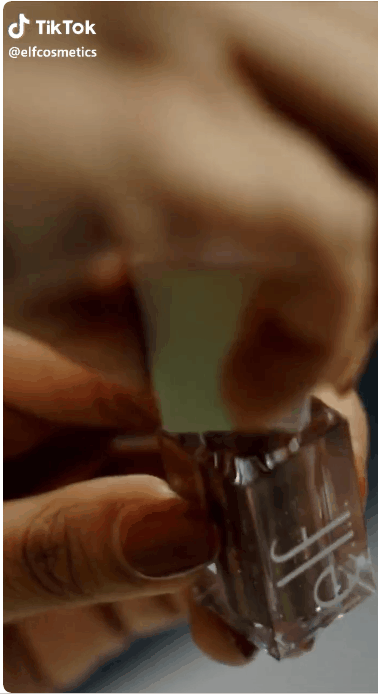
“Elf’s music video went viral on TikTok, and since it became so known on TikTok, it brought significantly strong performance when incorporating it across other channels, specifically Instagram,” says Corpus
Chipotle has been capitalizing on Hashtag challenges for a while now, using holiday promotions like the #Boorito challenge during Halloween and celebrating national Avocado day with the #Guacdance challenge.
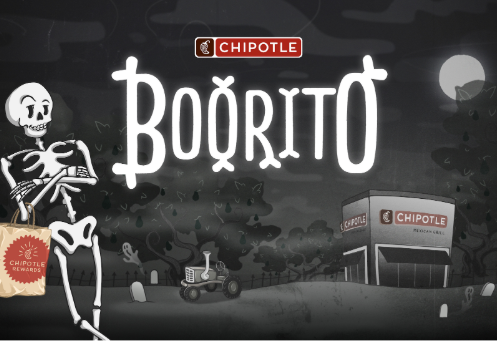
While some may find it silly, these challenges grab attention and get users involved in their brand persona.
Like Chipotle, Kool-Aid used hashtag challenges to their advantage during a holiday, launching the OhYEAHChristmas challenge.
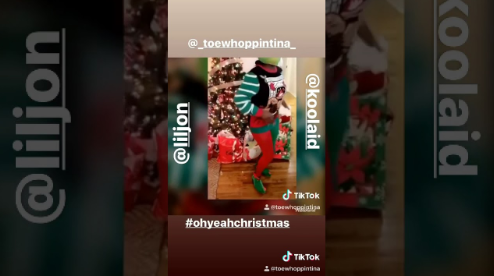
They took a well-known part of their previous traditional ad campaigns and made it into something their audience could directly participate in. Influencers also brought in millions of views when they participated in the challenge themselves.
Like many retail giants, Walmart looked to social media to promote Black Friday deals with influencer marketing and a hashtag challenge called the #DealDropDance.
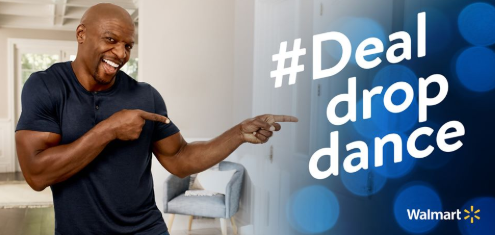
They worked with six influencers, including Terry Crews, to reach more of their audience to get a combined 17 million users.
When sports organizations advertise, they often display player stats, highlight reels, or gameday predictions; the NBA has used TikTok to show the organization’s more human side.
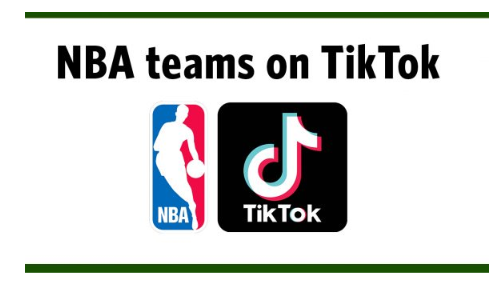
Music-backed clips of inspirational messages from players or funny clips of mascots help engage their audience in more endearing ways and make the brand more relatable.
While it started as and still is, a part of printed media, the Washington Post has not ignored the digital landscape. After creating their TikTok account, they began to post funny behind-the-scenes videos of their journalists in the newsroom.
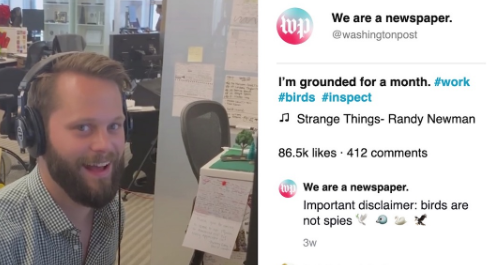
While this isn’t the hard-hitting journalism that the Post is known for, it’s funny and engaging, fitting perfectly into the social media landscape. Not only does it help to drive awareness, but it also allows them to keep in touch with the younger demographics.
TikTok has grown from its origins as a short-form video app for teenagers into a genuine juggernaut of a social media platform. Its global reach and growth rate alone make it a lucrative opportunity for advertisers, but its unique audience and a particular set of ad formats make it an especially high-potential space to explore.
While Facebook has historically been the king of direct response, each social channel has a unique offering that aligns with real business goals. TikTok should be considered when pulling together a holistic paid social strategy.
Editor’s Note: This post was originally published in August 2021 and has been updated for freshness, accuracy, and comprehensiveness.
